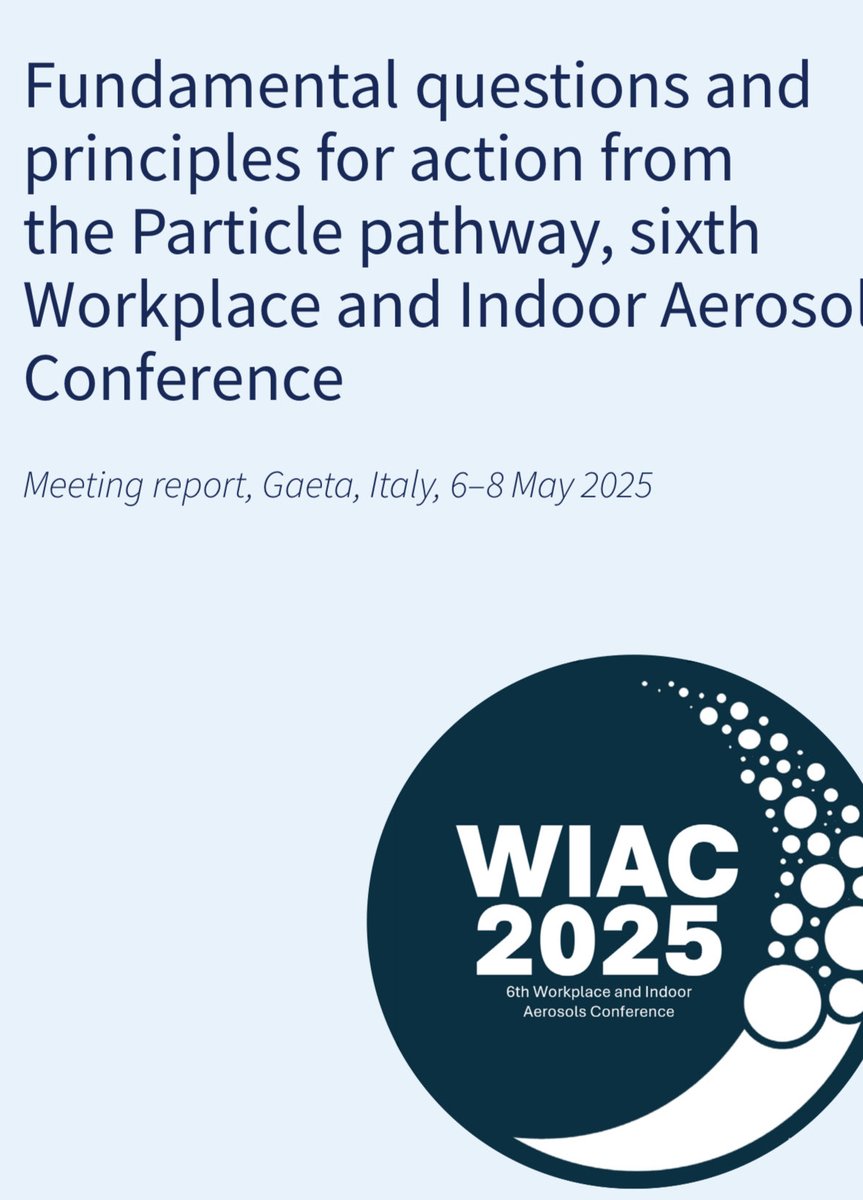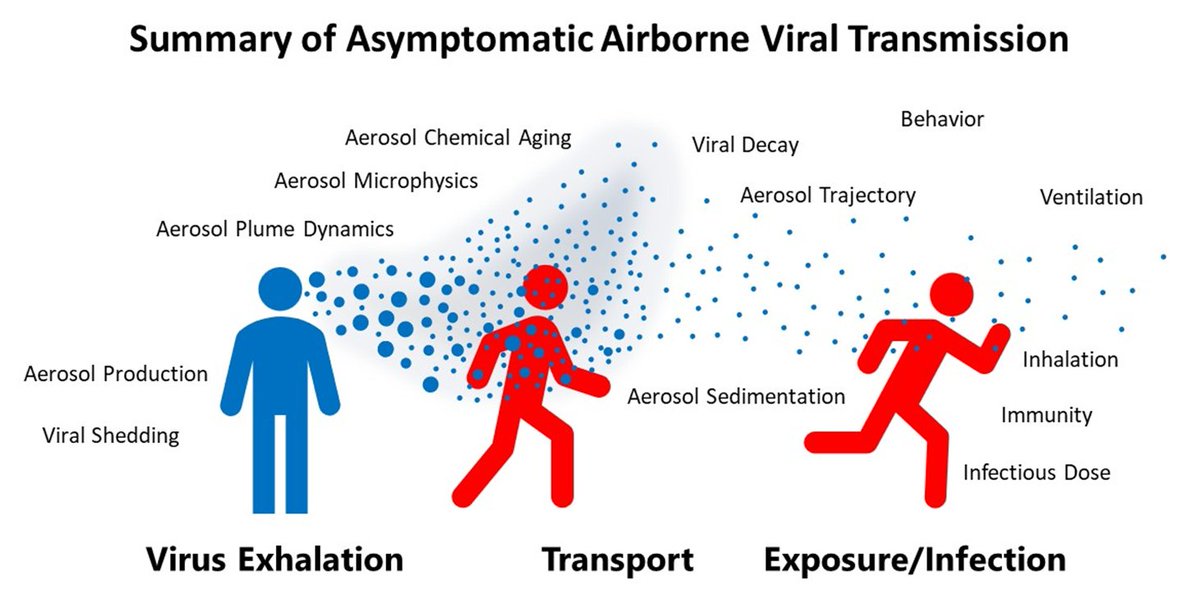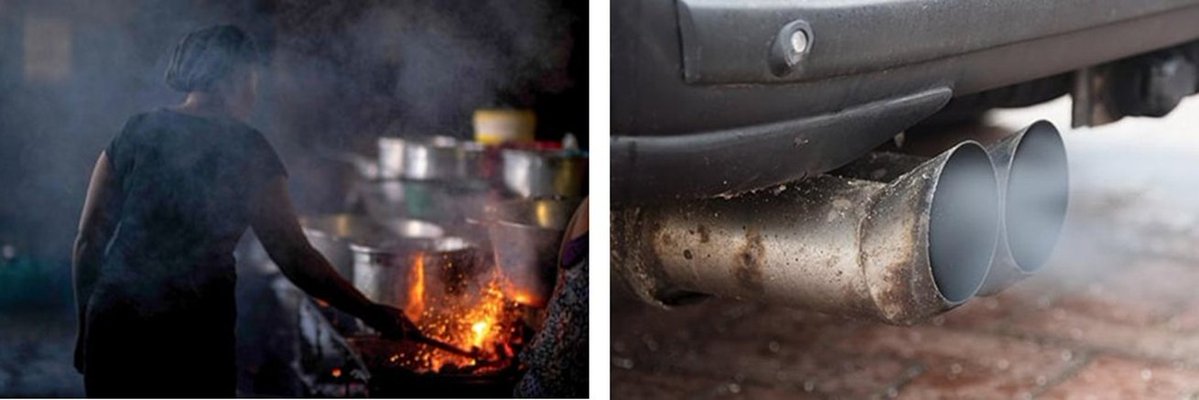Given the unusually high number of swimmers catching Covid in the Olympics, many have hypothesized as to why. I’ve seen a few people point to some work we published on how environmental factors affect SARS-CoV-2’s aerostability.
Some thoughts🧵:
Some thoughts🧵:
https://x.com/Ikat0/status/1819526475587973354
Context:
When respiratory aerosol is exhaled, the dissolved CO2 in the fluid (in the form of HCO3) leaves the aerosol over the course of a couple of minutes. When the CO2 leaves, the pH of the aerosol reaches >10.3.
The high pH drives viral decay.
When respiratory aerosol is exhaled, the dissolved CO2 in the fluid (in the form of HCO3) leaves the aerosol over the course of a couple of minutes. When the CO2 leaves, the pH of the aerosol reaches >10.3.
The high pH drives viral decay.

We have reported that anything that can limit this increase in aerosol pH, such as nitric acid or CO2, slows the airborne viral decay rate. This, in turn, will increase the risk of transmission. 

The net effect is more impactful over longer time periods. Elevating the CO2 from 500 to 3000 ppm leads to a 10-fold increase in the airborne viral load over 40 minutes. Likewise, increasing nitric acid from 0 to ~50 ppb leads to 2-fold increase. 

The decay rate of the virus in the aerosol slows over time (left). The reason for this is that the trace acidic vapor in the air (normal air pollution) will slowly neutralize the aerosol. As this happens, the aerosol becomes more and more hospitable for the virus (right). 

Okay, so what does this have to do with a swimming pool? Well, the swimming pools are disinfected with chlorine. Chlorine vapourwill react with the water in the respiratory aerosol to form acid. This will reduce the aerosol pH. 

This suggests that the chlorine in the air around the pool will lead to the virus remaining infectious in the air longer, leading to higher transmission risk.
Theory 1: The chlorine above the pool neutralizes the aerosol, leading to the virus remaining infectious in the air longer. 

Theory 2: The concentration of chlorine above the pool is so high that the pH in the aerosol actually becomesacidic, and the acidity inactivates the virus. 

Which theory is correct? 1 or 2?
Unfortunately, currently, we simply don’t know. The measurements have yet to be made. I could speculate, but that wouldn’t be all that helpful (if not harmful).
Unfortunately, currently, we simply don’t know. The measurements have yet to be made. I could speculate, but that wouldn’t be all that helpful (if not harmful).

A link to the study where we first explore the interplay between air acidity and aerostabilityis here:
royalsocietypublishing.org/doi/10.1098/rs…
royalsocietypublishing.org/doi/10.1098/rs…
It’s also important to note that there are numerous factors that ALL play a role in airborne viral transmission. What is happening in the Olympic pool could be due a factor other than aerostability, or even a combination of multiple factors. We need to make measurements to know. 

Since there were people discussing this, I thought it would be helpful for people to have a better understanding of the underlying processes that are in play.
If you have any questions, I would be happy to try to answer them.
If you have any questions, I would be happy to try to answer them.
I suppose? Humidity is known to affect mucosal immunity, perhaps this is something similar(?).
Maybe someone more familiar with this end of things can add some insights… 🙏
Maybe someone more familiar with this end of things can add some insights… 🙏
• • •
Missing some Tweet in this thread? You can try to
force a refresh
















